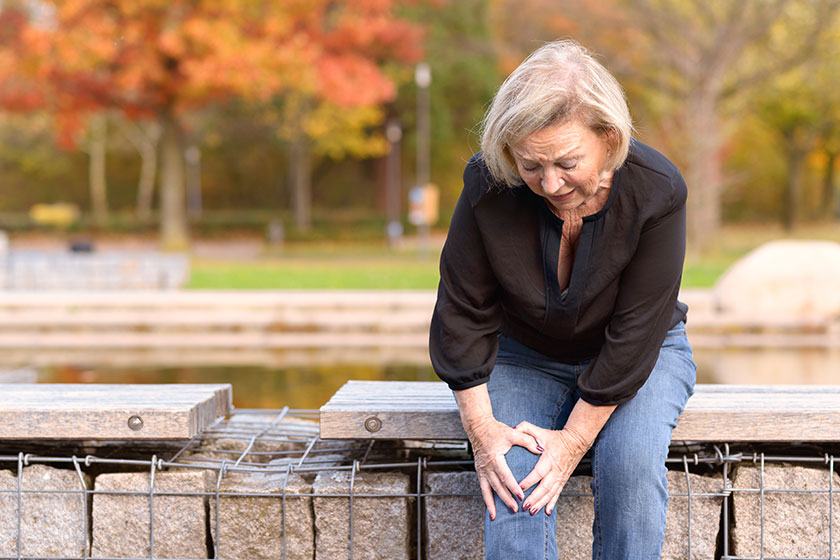As the golden years approach, the whisper of knee pain often becomes a common chorus in the symphony of aging. But what if we could turn down the volume on this discomfort? Embarking on a journey to unravel the secrets of how to prevent knee pain in old age is not just about safeguarding our steps; it’s about preserving the joy and freedom that come with unhindered movement. This article serves as your map through the terrain of proactive measures, lifestyle tweaks, and gentle exercises – all designed to keep your knees as youthful as your spirit, ensuring that each step you take is as light and pain-free as possible.
Understanding the Causes of Knee Pain
Before diving into prevention strategies, it’s important to understand the common causes of knee pain in old age. These include:
- Arthritis: Osteoarthritis is the most common form, where the cartilage in the knee joint wears down over time.
- Tendinitis: Inflammation of the tendons, often caused by overuse.
- Bursitis: Inflammation of the bursae, the small sacs of fluid that cushion the knee joint.
- Muscle Weakness: Weak muscles around the knee can increase the strain on the joint.
- Injuries: Past injuries can lead to chronic knee pain later in life.
Maintaining a Healthy Weight
Excess body weight puts additional strain on your knees. Each pound of body weight adds roughly four pounds of pressure on the knees when walking. Maintaining a healthy weight through a balanced diet and regular exercise can significantly reduce the risk of knee pain.
Regular Exercise
Regular exercise is key to preventing knee pain. It strengthens the muscles around the knee, improving support for the joint. Low-impact exercises such as swimming, cycling, and walking are particularly beneficial. It’s important to start slowly and increase the intensity gradually to avoid overexertion, which can lead to injuries.
Strength Training
Strength training exercises that focus on the hamstrings, quadriceps, and other muscles around the knee can help support and stabilize the joint. Exercises like leg presses, squats, and lunges are effective, but it’s crucial to perform them correctly to avoid injury.
Flexibility and Balance Exercises
Improving flexibility and balance can help reduce the risk of falls and injuries that could exacerbate knee pain. Yoga and tai chi are excellent for enhancing balance, flexibility, and overall joint health.
Proper Footwear
Wearing the right shoes is essential for knee health. Shoes that provide good arch support and cushioning can help absorb shock and reduce stress on the knees. Avoid wearing high heels regularly, as they can lead to increased pressure on the knees.
Healthy Diet
A diet rich in anti-inflammatory foods can help reduce the risk of joint inflammation and pain. Foods high in omega-3 fatty acids, such as fish, flaxseeds, and walnuts, are particularly beneficial. Incorporating fruits, vegetables, whole grains, and lean proteins into your diet can also support overall joint health.
Avoiding High-Impact Activities
While staying active is important, it’s equally crucial to avoid activities that put excessive stress on the knees. High-impact sports like running on hard surfaces, jumping, and aggressive twisting movements can increase the risk of knee injury and pain.
Proper Posture and Body Mechanics
Good posture and body mechanics play a significant role in preventing knee pain. When lifting objects, bend at the hips and knees rather than the waist to reduce stress on the knee joints. When sitting, keep your feet flat on the floor and avoid crossing your legs, as this can put additional pressure on your knees.
Regular Check-Ups
Regular check-ups with a healthcare provider can help identify any early signs of knee problems. Early intervention can prevent minor issues from becoming more serious and painful.
Listening to Your Body
Pay attention to your body’s signals. If you experience knee pain, don’t ignore it. Rest, apply ice, and consult a healthcare professional if necessary. Pushing through pain can lead to further damage.
Embracing these preventative measures is akin to nurturing a garden – it requires patience, consistency, and a touch of wisdom. As you journey through the seasons of life, let the cultivation of healthy habits be your steadfast companion. By weaving together the threads of a balanced diet, mindful exercise, and attentive self-care, you create a tapestry of resilience that not only guards your knees against the wear and tear of time but also enriches your golden years with the freedom of movement. Remember, each step taken in awareness and care is a step towards a future where knee pain is but a distant echo, allowing you to stride forward into the sunset of life with ease and grace.






